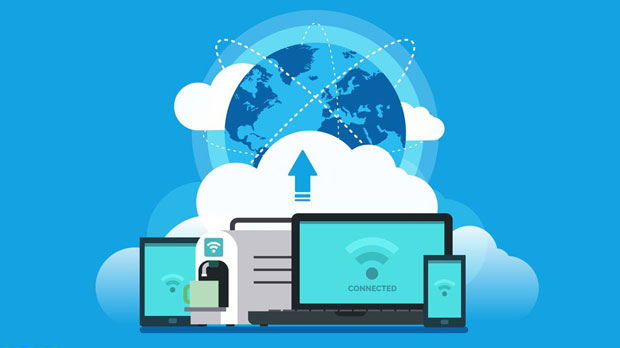In the rapidly evolving world of digital advertising, companies are under constant pressure to optimize their ad strategies, improve their ROI, and ensure that their ads are being displayed as intended. One tool that has gained popularity in the ad-tech industry is the PYPROXY residential proxy. By leveraging the power of residential IP addresses, this service offers a more effective, secure, and accurate way to monitor ads across different regions. This article explores how Py proxy residential Proxy enhances ad monitoring, its benefits, and how it addresses the challenges faced by advertisers in the digital space. Introduction: The Need for Accurate Ad MonitoringDigital advertising is an essential component of modern business strategies. Advertisers rely on real-time data and accurate reporting to make informed decisions and optimize their campaigns. However, one of the biggest challenges faced by advertisers is ensuring that their ads are being shown correctly, on the right platforms, and to the right audience. There are various factors that can influence ad visibility, such as geolocation, device type, and even browser settings. As a result, ad monitoring becomes crucial for ensuring that ads perform well and deliver the desired results.What Is PyProxy Residential Proxy?PyProxy Residential Proxy is a type of proxy service that uses real residential IP addresses to route internet traffic. Unlike traditional data center proxies, which are easily identifiable as proxy traffic, residential proxies use IP addresses associated with real devices (e.g., mobile phones or home computers). This makes it more difficult for websites, ad networks, and online platforms to detect and block traffic coming from these IPs.By simulating real user behavior, PyProxy Residential Proxy provides an enhanced level of anonymity and reliability, making it a powerful tool for ad monitoring. Advertisers can use this service to gather insights into how their ads are being displayed across different regions and platforms.How PyProxy Residential Proxy Helps in Ad MonitoringAd monitoring is a vital part of any digital marketing strategy. Here's how PyProxy Residential Proxy contributes to the process:1. Overcoming Geolocation BarriersOne of the primary benefits of PyProxy Residential Proxy is its ability to bypass geolocation restrictions. Many advertising networks serve different ads based on the user's geographic location. For example, an ad campaign might be targeting users in the United States, but advertisers may want to check if the same ad is displayed in other regions like Europe or Asia. With traditional proxies, geolocation restrictions can prevent advertisers from accurately testing ads in different locations.PyProxy Residential Proxy, on the other hand, allows advertisers to simulate users from various locations around the world. By routing traffic through residential IPs in different regions, advertisers can check if their ads are displayed consistently and as intended, no matter where the user is located.2. Real-Time Data CollectionEffective ad monitoring requires real-time data collection. Advertisers need to quickly identify any issues with their campaigns and make necessary adjustments. Traditional methods of ad monitoring can be slow, with delays in reporting and feedback. PyProxy Residential Proxy, however, provides instant access to data from multiple regions, helping advertisers make timely decisions.With real-time data, advertisers can monitor how their ads are performing across different devices, regions, and demographics. This allows them to fine-tune their campaigns, identify trends, and optimize their advertising spend to achieve the best possible results.3. Preventing Ad FraudAd fraud is a persistent issue in the digital advertising industry. Fraudulent activities such as click fraud, impression fraud, and bot traffic can skew ad performance data and lead to wasted advertising dollars. One of the ways PyProxy Residential Proxy helps prevent ad fraud is by masking the identity of users accessing the ads.By using real residential IPs, advertisers can simulate actual human behavior. This makes it harder for fraudsters or bots to target ads or manipulate click-through rates. Moreover, because residential proxies are less likely to be flagged or blocked by ad networks, advertisers can ensure that they are getting accurate data from real users.4. Multi-Platform Ad MonitoringAdvertisers run campaigns across a wide range of platforms, from search engines to social media networks and video platforms. Each platform has its own set of rules, targeting options, and display formats. Monitoring ads across these different platforms can be challenging, especially when trying to maintain consistency in ad performance.PyProxy Residential Proxy simplifies multi-platform ad monitoring by allowing advertisers to access ads from various platforms using real residential IPs. Whether an ad is displayed on a mobile device, desktop computer, or smart TV, PyProxy ensures that advertisers can accurately track how their ads are performing across all devices and platforms. This ability to monitor ads across multiple channels is essential for maintaining a cohesive and effective ad strategy.5. Competitive IntelligenceIn the competitive world of digital advertising, staying ahead of competitors is crucial. Advertisers need to know what their competitors are doing, how they are displaying ads, and how their strategies compare. PyProxy Residential Proxy provides a way for advertisers to conduct competitive intelligence by monitoring the ads of their competitors.By using residential IPs, advertisers can safely access competitors' ads without being detected. They can gather valuable insights into ad creatives, targeting strategies, and overall campaign performance. This helps advertisers refine their own strategies and stay competitive in the marketplace.6. Enhanced Security and PrivacyIn today's digital landscape, privacy and security are more important than ever. Ad networks and platforms are increasingly concerned about data privacy, and advertisers must comply with various regulations, such as GDPR. PyProxy Residential Proxy helps enhance security and privacy by masking the identity of users and making it difficult for third parties to track or intercept data.Because the traffic is routed through residential IPs, PyProxy Residential Proxy adds an extra layer of anonymity, ensuring that sensitive ad data remains secure. Advertisers can confidently monitor their campaigns without worrying about privacy breaches or data leaks.Benefits of Using PyProxy Residential Proxy for Ad Monitoring1. Increased Accuracy in Ad ReportingWith the ability to simulate real users across various regions, devices, and platforms, PyProxy Residential Proxy provides more accurate ad reporting. Advertisers can trust that the data they receive reflects the true performance of their ads, allowing for better decision-making and more effective campaign optimization.2. Cost EfficiencyTraditional ad monitoring tools can be expensive, especially when testing ads across multiple regions and platforms. PyProxy Residential Proxy offers a cost-effective solution by allowing advertisers to access real residential IPs at a fraction of the cost of other tools. This helps advertisers maximize their budgets while still gaining valuable insights into their campaigns.3. ScalabilityAs ad campaigns grow, so does the need for comprehensive monitoring. PyProxy Residential Proxy is highly scalable, making it ideal for advertisers with large-scale campaigns. Whether monitoring a single ad or managing a global ad strategy, PyProxy can handle the demands of large campaigns and provide valuable insights at scale.In conclusion, PyProxy Residential Proxy offers a powerful and effective solution for ad monitoring. By using real residential IPs, it provides accurate, reliable, and secure access to ad data across different regions and platforms. From overcoming geolocation restrictions to preventing ad fraud and enhancing privacy, PyProxy Residential Proxy empowers advertisers to optimize their ad campaigns and improve performance. In a digital advertising landscape that is constantly evolving, this tool offers significant advantages for those looking to stay ahead of the competition and maximize their advertising ROI.
Oct 20, 2025



































































